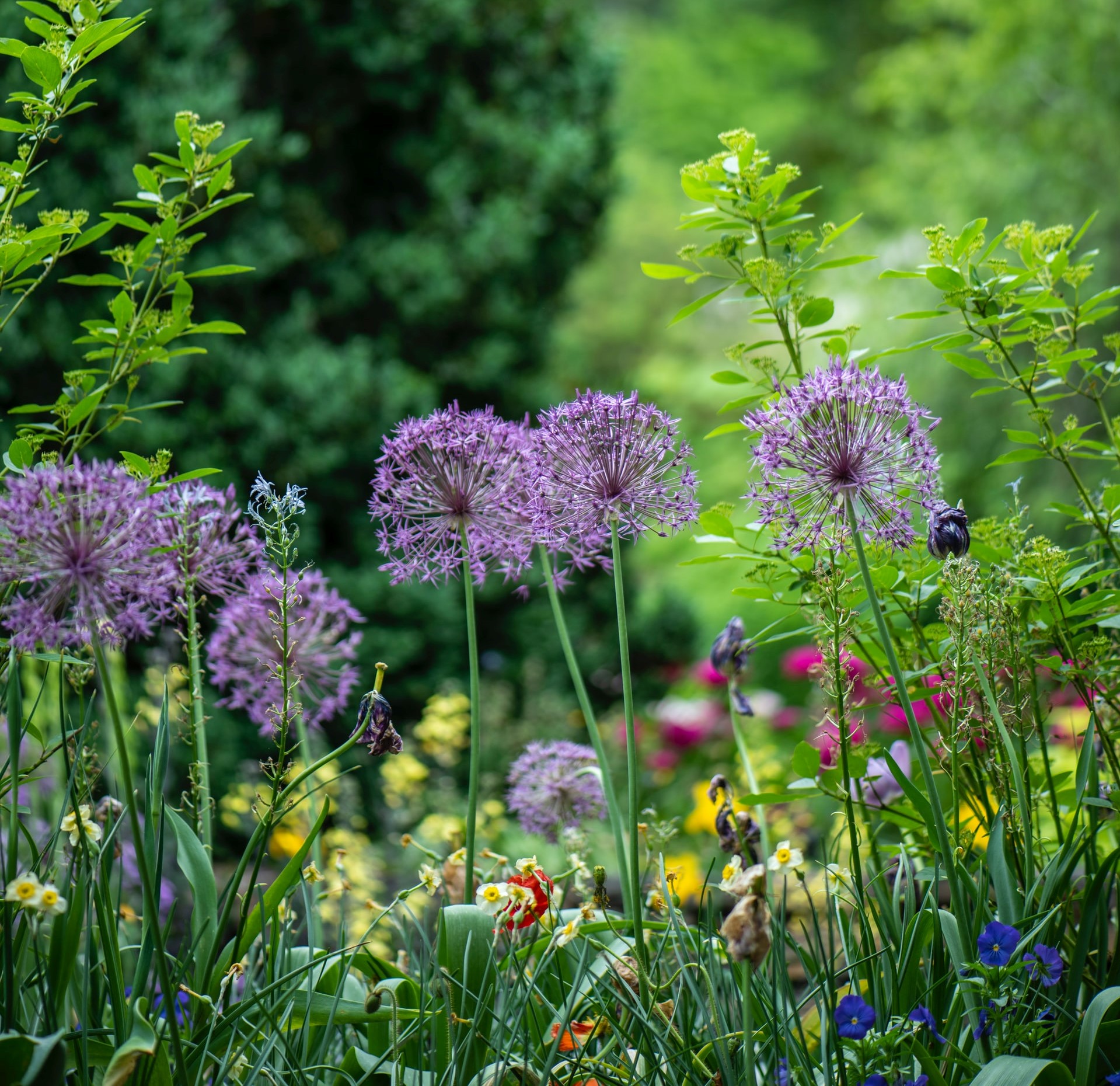By Natalie Stevenson
Beautifully manicured lawns are often a source of pride and joy for keen gardeners, with the rumble of lawn mowers being a familiar sound throughout spring and summer. And yet, UK gardeners are increasingly taking a stand against the traditional approach to lawn care as part of Plant Life’s ‘No Mow May’ campaign.
By abandoning strict lawn care and letting the grass and wildflowers grow, gardens can provide some support to the struggling insect population and give them a boost as their annual spring awakening begins. This is becoming increasingly essential, with 7.5 million acres of flower-rich meadows and pastures in the UK having been lost since the 1930s, leaving many pollinators struggling to find nectar after their long winter of dormancy.
The campaign has also fostered the reappearance of rarer native wildflower species, such as meadow saxifage, eyebright, and knotted clover, growing amongst the more common dandelion and clover. As the UK’s biodiversity levels have been rapidly declining due to factors such as increased urbanisation, changes towards gardening habits that keep biodiversity in mind mean that domestic gardens may become a key haven for wildlife.
By abandoning strict lawn care and letting the grass and wildflowers grow, gardens can provide some support to the struggling insect population and give them a boost as their annual spring awakening begins.
Aside from the intrinsic beauty and value of nature, the loss of biodiversity threatens the wider functioning of the earth system. Ecosystem services—the direct and indirect contributions of ecosystems to human wellbeing—rely on healthy and diverse communities of plants, bacteria, and animals to function. These services are key to a healthy planet. They provide food, clean air and water, help prevent soil erosion and flooding, and aid with cooling local habitats. With global temperatures on the rise and extreme weather events increasing in both frequency and severity, preserving natural ecosystems will be vital for mitigating the impact of climate change on a local and global scale.
The human cost of losing these services would be astronomical. A recent estimate placed the value of ecosystem services at more than one and half times the global GDP. Raising awareness of the value of nature—intrinsically, economically, and for the survival of humanity—and inspiring public action is key in combatting further loss. But how effective can small-scale individual actions be against this wholesale global change?
With global temperatures on the rise and extreme weather events increasing in both frequency and severity, preserving natural ecosystems will be vital for mitigating the impact of climate change on a local and global scale.
Despite increasing efforts to protect habitats both on land and at sea, the UK is estimated to have seen a 13% decline in the average abundance of wildlife since the 1970s. This decline is one of worst out of the G7 countries. The UK scores only 50% in the Biodiversity Intactness Indicator (measurement of the impact of human activity on plants, animals, and landscapes), meaning it has only retained half of its natural diversity, compared to 65% for France, 67% for Germany, and 89% for Canada. In 2010, 150 signatory countries of the Convention on Biological Diversity agreed on the Aichi Targets, which aim to address biodiversity loss, reduce the direct pressures on biodiversity, and promote sustainability. The UK government failed to meet 17 of the 20 targets by the 2020 deadline. This comes at a time where environmental funding has been cut by almost £200 million. In fact, the progress that has been made to improve biodiversity in the past decade stemmed from targeted partnerships often initiated by NGOs.
Against the failure of the government in tackling biodiversity loss, the general public have stepped up. Campaigns such as No Mow May have encouraged the green-fingered among us to resist the urge to prune and tame our gardens. Instead, nature is left to grow uninterrupted, encouraging wildlife to return. In 2019, Plant Life’s post-annual campaign survey found that, combined across all the lawn flowers in the survey, enough nectar had been produced to support around 60,000 hives of honeybees7. This reflects just how much a small change in each garden can make.
Small actions, such as constructing log piles for insects and toads, leaving holes in fences for hedgehogs, and letting clover and dandelions grow in abundance, are motivated by the hope that garden spaces may become sanctuaries for not just the gardener, but local wildlife too.
There has been a marked change in gardening practices over the past couple of years. The wealth of information now being provided by charities such as the Royal Horticultural Society and the National Trust has increased the public’s awareness of sustainable gardening methods. Small actions, such as constructing log piles for insects and toads, leaving holes in fences for hedgehogs, and letting clover and dandelions grow in abundance, are motivated by the hope that garden spaces may become sanctuaries for not just the gardener, but local wildlife too.
And yet, collaboration is key. Common garden visitors, such as bees and butterflies, along with rarer guests, like hedgehogs, often cover over a kilometre square in search of resources. This means that single gardens are not enough. Instead, multiple neighbours need to combine forces and collaborate on mini re-wilding projects, providing corridors of gardens with interconnected habitats. With housing schemes tending to favour smaller gardens to accommodate the largest number of houses possible, working together is becoming even more important.
Although the UK government has established new targets in an attempt to reverse the downward trend in biodiversity, charity gardening campaigns will continue to play a huge role in encouraging people to garden with nature in mind. Transitions to more sustainable practises, such as ditching pesticides and peat compost, no-dig vegetable patches, and encouraging native plants to grow, are largely driven by charities. These small, but meaningful, steps help to raise awareness of what we as individuals can do to support local biodiversity—and with that, support the planet as a whole.





